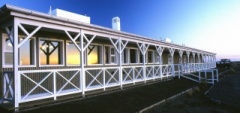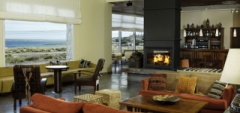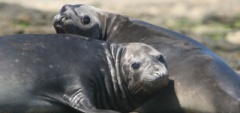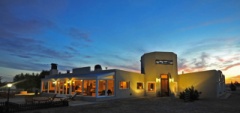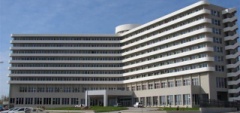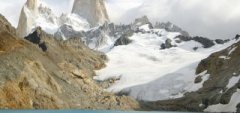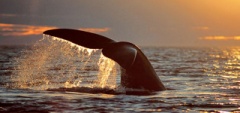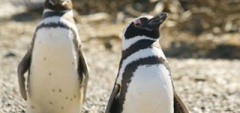The Peninsula Valdes
One of the greatest places on the planet for witnessing natures marine might in all its glory...
Probably the most well known nature area in Argentina, the Valdes Peninsula is, at first look, not somewhere that should harbor life! However, while the land may look barren and inhospitable, it is the oceans that surround this peninsula that are the reason to come here. With two bays, one to the north and the other to the south, the Valdes Peninsula provides a tranquil stopping point for, in particular, southern right whales for both nursing and mating, away from the harsh Atlantic swells.
As you arrive into the bleak and windswept plains of Argentine Patagonia, you are struck by the sheer vastness and also the inhospitableness of it all. It is fairly unbelievable that the first immigrants into Argentina came down to the Valdes Peninsula as long ago as the late 1800s and managed to carve out a life for themselves. Driving from Trelew towards the Valdes Peninsula, you start to see a few traces of life, the occasional Guanaco (a wild version of the famous Llama), or hairy armadillo. It is only when you arrive at the coast that you realise the real reason to come here, for the unbelievable Valdes Peninsula and the sea life that it nurtures.
The Valdes Peninsula has been formed over millions of years as the Atlantic has ebbed and flowed, leaving strange deposits of shells as it went. Today the peninsula is set on base bedrock, with layers and layers of sand-sediment on top. Without good growing soil, the only plants that survive here are small and need relatively little. It does, however, still manage to sustain a population of Guanacos, and the sheep and cattle ranches that make up a patchwork across the land.
All around this sandy promontory into the Atlantic that makes up the Valdes Peninsula, the beaches teem with life: the myriad of elephant seals, the sea lion colonies, the occasional Magellenic penguin and, of course, the famous South Right Whales. For more information on the wildlife of this fantastic area please head to our Wildlife section.
Click here to view some video footage of the area.
PUERTO MADRYN - the main town of the area and a good base.
Puerto Madryn is the second largest town in the region and is set on the first of the two large, natural harbours of the Peninsula. Where the nearby Trelew is the centre of the Aluminum trade in Argentina (apologies, it is spelt like this out there!), Puerto Madryn takes the title for the area’s burgeoning tourism trade.
In the past 5 years or so it has witnessed a surge in building and investment with hotels and restaurants springing up all along the front of the sweeping beachfront area. With this building has come a range of options for tourists from high end, casino hotels to smaller, less expensive options. All in all, however, it is a very good place to use as a base for exploring this wild and wonderful area.
In our view, as the Whale migration is fairly seasonal, Puerto Madryn comes into its own as the whales start to arrive, from the end of June. At this time of year it is possible to see them breaching in the bay. As you move further to the north it is even possible to see them relaxing in the warmers waters along the edges of the beaches, where the drop off is more extreme.
From the end of August, as the whales relocate to the other side of the peninsular, it then becomes a bit of a journey to drive across every morning (if whales are your thing) and so we would recommend locating yourself on the Peninsular itself. With other regional highlights such as the Magellenic penguin colony of Punta Tombo and the infamous Welsh settlement at Gaiman just a stone’s throw away, it is has much to offer.
For more information on Puerto Madryn, have a look at their web site http://www.madryn.com/
Where to stay: Territorio Hotel
GAIMAN - a small piece of Welsh tradition!
Where the nearby, much larger, Trelew, has been turned from quaint Welsh settlement to aluminum mining town, Gaiman has, fortunately, been overlooked. The village itself was one of the first settlements of the Welsh when they colonised this area of Argentina in 1874, and has remained a stronghold ever since.
The rows of stone cottages and Welsh teahouses offer a glimpse into a past of sorts. The teas themselves, while mainly for tourism these days, are still vast and very good. A couple of hours passing through is time well spent.
TRELEW - the economic heart of the region but offers little else.
In its heyday it was a wealthy Aluminum refining station and, as such, was the main source of income for most of the residents of the area. As such, it drew many of the farmers and workers from the surrounding regions in, and they have, pretty much, remained. (there is still a strong Aluminum contingent here)
However, the town offers very little to the passing tourist other than the museum of Natural History and so is very much passable.


